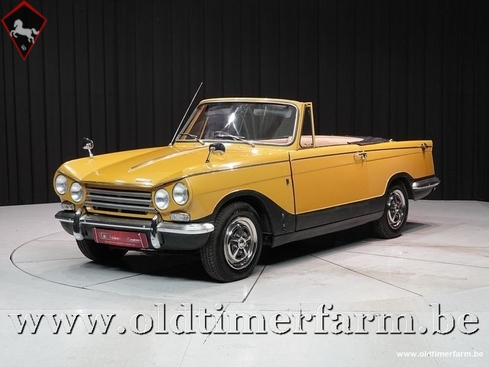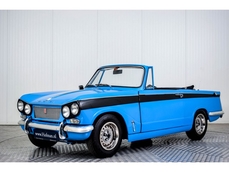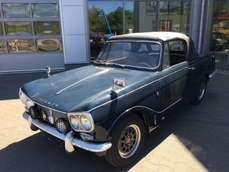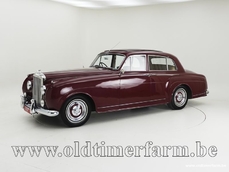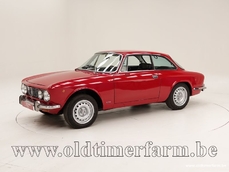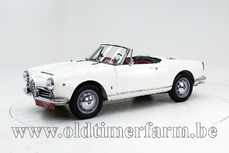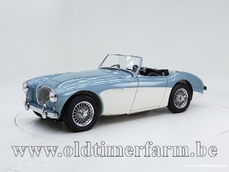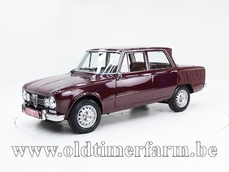Triumph Vitesse '71 1971
General description :
In 1959, Triumph launched the Herald, a small sedan full of charm, the design of which was the work of Giovanni Michelotti, who would later design the TR4, TR5 and TR6, as well as the Spitfires and GT6, the latter two sharing with the 'Herald frame structure. It was available as a sedan, coupe, convertible, station wagon and van. The Herald will be produced until 1971 in 300,000 copies. The much more powerful Vitesse was built from the same chassis from 1962 onwards, but which nevertheless retained the dimensions of the "little" Herald. The name "Vitesse" had already been used by Austin in ... 1914, then by Triumph between 1935 and 1938. Then, the term will be reused by Rover until 1998. In profile and seen from behind, the Vitesse could be confused with a Herald, but from the front, it was something else! Instead of a simple grille and two headlights, it had four "Chinese-style" front lights, like the Rolls Royce Silver Cloud III convertible of the 60’s. Its engine was a 1.6-liter in-line six, then from September 1966, a 2.0-liter in-line six. This two-liter, which was also fitted to the GT6 convertible, developed a power of 94 horsepower, ie. the same as the MGB for the same weight. His torque was somewhat superior. Yet another resemblance: same wheelbase, same length and same width. And yet the two had nothing in common. In 1968, the Vitesse became Vitesse Mk II until production ceased. Its rear suspension had been reworked, the power went from 94 to 104 horsepower, thus becoming more efficient than the MGB and the Sunbeam Alpine, its two direct competitors (coupe and convertible). The Vitesse sold well in all its configurations, which will not be the case with the Dolomite which followed it. Specifications Bodywork Length : cm (in): 389 (153) Width : cm (in): 152 (60) Height : cm (in): 132 (52) Wheelbase : cm (in) : 232 (91.5) Weight: kg (lb) : 927 (2044) Mechanics. Displacement : straight-six 1998 cc (122 cu in), front-mounted Valve gear : 12 Fuel system : 2 Stromberg carburettors Gearbox : 4-speed manual Drive wheels : rear-wheel drive RHD Maximum power : 104 hp at 5300 rpm Maximum torque : 156 Nm at 3000 rpm Maximum speed : 170 km/h (106 mph)
http://www.oldtimerfarm.be/en/collection-cars-for-sale/5303/triumph-vitesse-mk-ii-71.php
1971 Triumph Vitesse '71 is listed sold on ClassicDigest in Aalter by Oldtimerfarm Dealer for €17500.
Car Facts
Car type : Car Make : Triumph Model : Vitesse Model Version : '71 Engine size : 0.0 Model Year : 1971 Location : Aalter
Sold
Seller Information
Sold
People who viewed this Triumph Vitesse also viewed similar Triumph listed at ClassicDigest
Other cars listed for sale by this dealer
About Triumph
Triumph, a name synonymous with classic sports cars and innovative designs, has a rich and storied history in the automotive world.The Triumph story began in the late 19th century when the company originally produced bicycles and then expanded into motorcycles. However, it was in the 1920s that Triumph ventured into the production of automobiles. Over the years, Triumph became renowned for its high-quality vehicles that combined performance with style.
One of Triumph's most iconic models was the TR3, introduced in the late 1950s. It was a classic British sports car, loved for its simple yet elegant design and thrilling driving experience. The TR3 was a symbol of affordable sports car enjoyment, and it set the stage for a series of successful TR models, including the TR4, TR5, and TR6.
In addition to sports cars, Triumph made a name for itself with Michelotti-designed sedans. The Triumph Herald, introduced in the early 1960s, was a compact family car that boasted stylish design and solid engineering. Later on, the Triumph 2000 and 2500 sedans catered to a more upscale market and earned a reputation for their comfortable rides and elegant looks.
However, despite its successes, Triumph faced numerous challenges over the years, including financial difficulties and ownership changes. In the 1980s, British Leyland, the company that owned Triumph, underwent significant restructuring, and the Triumph brand was gradually phased out.
The demise of Triumph was indeed sad and, to some extent, disgraceful. The company that had produced beloved sports cars and well-regarded sedans was slowly fading away. In 1984, the last Triumph-badged car rolled off the production line, marking the end of an era.
Although the Triumph name disappeared, its legacy lives on. Enthusiasts and collectors continue to cherish classic Triumph sports cars like the TR3, TR6, and Spitfire, as well as the unique charm of Triumph sedans. Triumph remains a symbol of British automotive heritage and the enduring appeal of classic sports cars.
In conclusion, Triumph's history is a blend of classic sports car excellence and innovative sedan design. Its sad and disgraceful demise serves as a reminder of the challenges faced by many automakers over the years, but the spirit of Triumph lives on in the hearts of automotive enthusiasts around the world.
